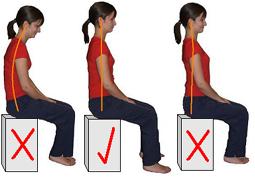The modern lifestyle, characterized by prolonged periods of sitting and increased screen time, has brought the issue of poor posture to the forefront of health concerns. Painful posture, encompassing back pain from slouching, rounded shoulders, and the increasingly common “tech neck,” highlights the direct impact of our daily habits on spinal health. These postural pitfalls not only cause immediate discomfort but also set the stage for long-term musculoskeletal issues. The journey toward understanding and addressing poor posture is essential, as it lays the foundation for both immediate relief and the prevention of chronic back conditions. By exploring the causes, symptoms, and effects of poor posture, individuals can begin to implement changes that promote spinal well-being and overall health.
The significance of posture correction cannot be overstated, with the strengthening of core muscles and the adoption of ergonomic practices playing pivotal roles in combating back pain. Ergonomics, particularly in the workspace, offers a preventive approach to back pain, emphasizing the importance of creating environments that support natural spinal alignment and reduce strain. For those dealing with the consequences of poor posture, such as lower back pain, neck discomfort, and headaches, understanding the relationship between daily habits and spinal health is the first step toward making positive changes. This includes recognizing the benefits of good posture, which extend beyond pain relief to include improved muscle function, enhanced breathing, and increased energy levels.
General Insights into Posture and Back Pain
The connection between posture habits and back pain is undeniable, with poor posture leading to a host of musculoskeletal problems. The consequences of poor posture extend beyond immediate pain, contributing to long-term issues such as arthritis and disc degeneration. Conversely, the benefits of good posture include reduced strain on the spine, improved muscle balance, and overall enhanced well-being. Ergonomics for back pain plays a crucial role in preventing posture-related discomfort, particularly for those spending extended periods at a desk or computer. Setting up a workspace that promotes good posture can help mitigate the risk of back pain and contribute to a healthier, more comfortable working environment.
Specific Concerns Related to Posture and Pain
Slouching and lower back pain are closely linked, as slouching places additional strain on the spine, leading to discomfort and potential injury. Incorporating stretches that target the spine can offer relief and help counteract the effects of slouching. Similarly, rounded shoulders, often a result of weakened chest and upper back muscles, can contribute to neck pain. Exercises designed to strengthen these areas can alleviate pain and improve posture. The phenomenon of “tech neck” and its associated headaches highlight the modern challenge of technology use and its impact on spinal health. Preventive measures, such as adjusting the height of devices and taking regular breaks, can help minimize discomfort. For office workers, integrating posture exercises into the workday can provide quick and effective relief, improving posture and reducing the risk of back pain.
Informational Insights on Spinal Health and Posture
Understanding the spine’s anatomy is essential for grasitating how posture affects back health. The spine, supported by muscles and bones, plays a pivotal role in maintaining posture. Poor posture can lead to muscle imbalances and pain through altered biomechanics, underscoring the importance of maintaining spinal alignment. The long-term effects of poor posture, including arthritis, disc degeneration, and breathing problems, further emphasize the need for proactive posture management. Mindfulness for posture, involving exercises that foster a deeper connection with the body, can offer a natural and effective way to improve posture over time. These practices encourage individuals to become more aware of their posture throughout the day, leading to gradual but lasting improvements.
Conclusion: Embracing a Holistic Approach to Posture Improvement
Addressing the challenges of poor posture and back pain requires a holistic and informed approach that goes beyond temporary fixes. Incorporating posture correction into daily routines involves a combination of strengthening exercises, ergonomic adjustments, and mindfulness practices that together foster spinal health. For individuals, especially those requiring in-home care, integrating these strategies into everyday life can significantly enhance comfort and functionality. The role of caregivers and healthcare professionals is crucial in providing the support and guidance needed to implement effective posture improvement practices. By focusing on the underlying causes of poor posture and employing targeted interventions, individuals can achieve lasting relief and prevent the onset of more serious spinal issues.
Moreover, the journey toward better posture and spinal health is ongoing, necessitating continuous awareness and adaptation of habits to support the spine’s natural curvature. The long-term outlook for individuals with posture-related back pain is positive, with education, proactive management, and lifestyle modifications playing key roles in achieving and maintaining spinal well-being. As research in the field of spinal health advances, new insights and treatment options continue to emerge, offering hope and expanded possibilities for those affected by poor posture. Ultimately, by prioritizing spinal health through good posture practices, individuals can enjoy a higher quality of life, free from the constraints of back pain and other posture-related ailments.



